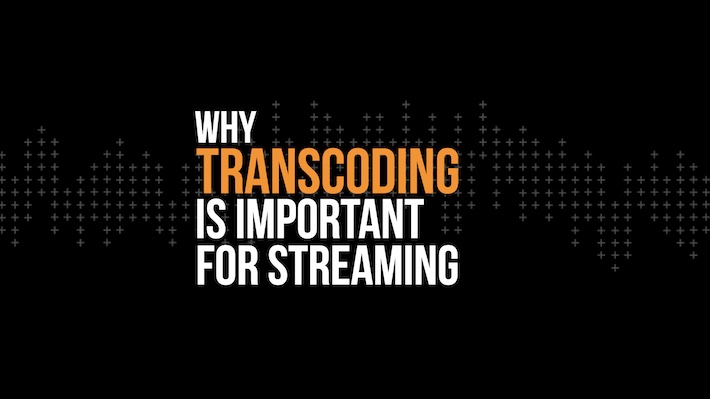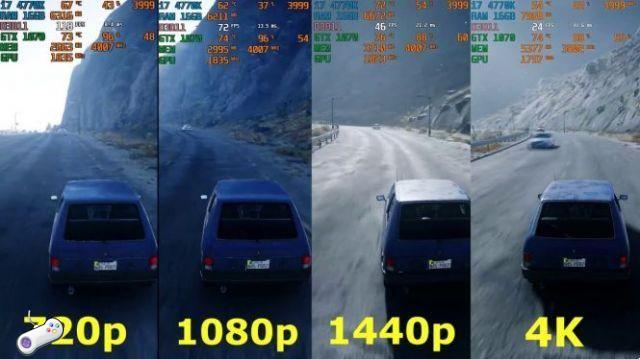Transcoding Part 3: Why We Need It for Optimal Video Streaming
 ritiksharmaaa
ritiksharmaaa
The Importance of Transcoding in Video Streaming: Adapting to Viewer Needs
Imagine you've just launched a new video streaming service, offering high-quality 4K content. The videos look stunning, and you're excited to deliver an unparalleled viewing experience. However, as users begin to access your content, you start receiving feedback: some users are experiencing buffering issues, while others can't even play the videos. The problem? Not all viewers have the devices or internet speeds needed to stream 4K video smoothly. This is where transcoding becomes crucial.
The Challenge: Delivering 4K Video to a Diverse Audience
Your initial content, encoded in 4K resolution, is perfect for viewers with high-end devices and fast internet connections. However, not all users have the latest gadgets or robust internet speeds. For instance:

High-End Devices: Viewers with powerful laptops or smart TVs can easily handle 4K content.
Older Devices: Users with older smartphones or tablets might struggle to play 4K videos smoothly.
Variable Internet Speeds: Users on slower or less stable internet connections may experience buffering or long loading times.
To provide a seamless experience for all users, it's essential to adapt the video content to suit their specific needs. This is where the process of transcoding comes into play.
What is Transcoding?
Transcoding involves converting a video file from one format to another, adjusting factors like resolution, bitrate, and framerate. This process creates multiple versions of the original video, each optimized for different devices and network conditions.
Why Transcoding is Necessary
Device Compatibility: Different devices support different resolutions and formats. For example, while a high-end laptop can handle 4K resolution, a basic smartphone may only support standard definition (SD).
Network Conditions: Users' internet speeds vary widely. Transcoding allows for adaptive bitrate streaming, where the quality of the video can adjust dynamically based on the viewer's current bandwidth. This ensures smooth playback even under less-than-ideal network conditions.
The Transcoding Process
Here's how transcoding helps in adapting the 4K content to meet diverse needs:

Input Formats: The original 4K video is ingested into the transcoding system. This high-quality source file serves as the basis for creating different versions.
Conversion: The video is transcoded into several formats and bitrates. For example:
A 1080p version for high-quality viewing on devices with smaller screens.
A 720p version for mid-range devices and slower connections.
An SD version (480p) for older devices or very low bandwidth situations.
Output Formats: These different versions are then stored and ready to be delivered based on the user's device capabilities and network speed.
Real-World Example: A Diverse Viewer Base
Consider the following viewers accessing the same content:
User 1: A user with a high-end smart TV streams the 4K version, enjoying the highest possible quality.
User 2: Another user with a mid-range tablet watches the 1080p version, balancing quality and performance.
User 3: An older smartphone user streams the 720p version, which fits the device's capabilities and ensures smooth playback.
User 4: A viewer with a basic keypad phone receives the SD version, which is optimized for minimal processing power and screen size.
User 5: A user on a slow mobile network streams the lowest bitrate version, minimizing buffering and ensuring a continuous viewing experience.
In each case, transcoding ensures that the video is delivered in a format and quality that the user's device and network can handle, providing the best possible viewing experience.
Bitrate and Framerate Considerations
Bitrate: Higher bitrates offer better quality but require more bandwidth. Transcoding helps by providing lower bitrate versions for users with limited bandwidth.
Framerate: While a high framerate (like 60 fps) can enhance the smoothness of the video, it also demands more processing power and bandwidth. For less capable devices, a lower framerate might be more appropriate.
Challenges in Transcoding
Transcoding is not without its challenges:
Resource Intensity: It requires significant computational resources, especially when handling large volumes of content or real-time streaming.
Latency: The transcoding process can introduce delays, particularly critical in live streaming scenarios. Optimizing the process is crucial to minimize latency.
Technologies and Tools
To handle transcoding efficiently, various technologies and tools are available:
FFmpeg: A widely-used open-source tool that supports a vast array of formats and codecs, ideal for custom transcoding workflows.
Cloud-Based Services: Platforms like AWS Elemental MediaConvert or Google Cloud Transcoder offer scalable solutions, enabling easy integration and handling of extensive transcoding needs.
Conclusion
Transcoding is an essential component of modern video streaming, enabling content providers to cater to a diverse audience with varying devices and network conditions. By converting videos into multiple formats and bitrates, transcoding ensures that every viewer can enjoy the best possible experience, regardless of their setup. As the demand for high-quality video content grows, the role of transcoding in optimizing delivery and enhancing user satisfaction becomes ever more critical.
This version provides a narrative approach, illustrating the practical importance of transcoding by starting with a real-world problem and explaining how transcoding solves it. Let me know if there's anything else you'd like to adjust or add!
Subscribe to my newsletter
Read articles from ritiksharmaaa directly inside your inbox. Subscribe to the newsletter, and don't miss out.
Written by

ritiksharmaaa
ritiksharmaaa
Hy this is me Ritik sharma . i am software developer
